Travel gives you guts doesn’t it? You do things you would never dream of doing back home. Like the time I willingly handed over my passport, a wad of cash and wandered into a Bolivian prison after reading the New York Times best seller ‘Marching Powder’…
Or jumping into the back of a van filled with Kenyans (who I didn’t know) with the promise of a “mad party” just out of town.
And then there’s the occasion I went caving in Guatemala, with a local lad, who didn’t speak English, at a time there were torrential rains and a flash flood to boot.
And the same goes for food. I eat things I wouldn’t dream of touching back home. Bats revolt me, so why would I eat one? Snakes freak me beyond belief – yet I’ll happily fry one up. Go figure…
There is just something about being overseas. You can just be a different version of yourself.
So here it is, the top 10 most challenging foods I have feared, tried and – in some cases – brought back up, whilst travelling.
1. Fried Tarantula, Cambodia
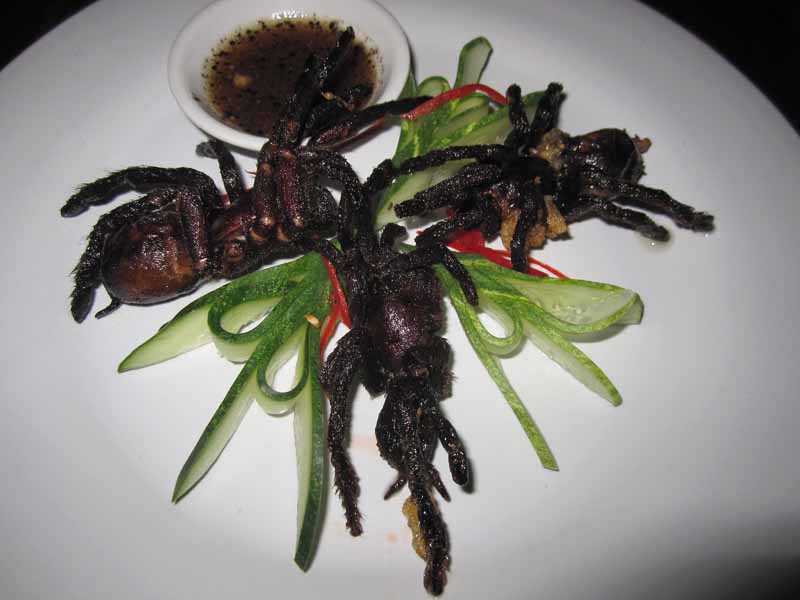
What’s the go: A regional delicacy across Cambodia, the Thai Zebra Tarantula is bred in holes beneath the ground and also foraged for in forestland across the country.
How’s it eaten: Fried in oil
And the taste: The idea of it was enough to send shivers down my spine, and the texture was absolutely vile. Crispy exterior with a soft centre – even whilst writing this, I am gagging at the thought. I know people often compare the taste of unfamiliar proteins to “chicken” and I guess that’s the only taste-like comparison I can make.
2. Aaruul, Mongolia
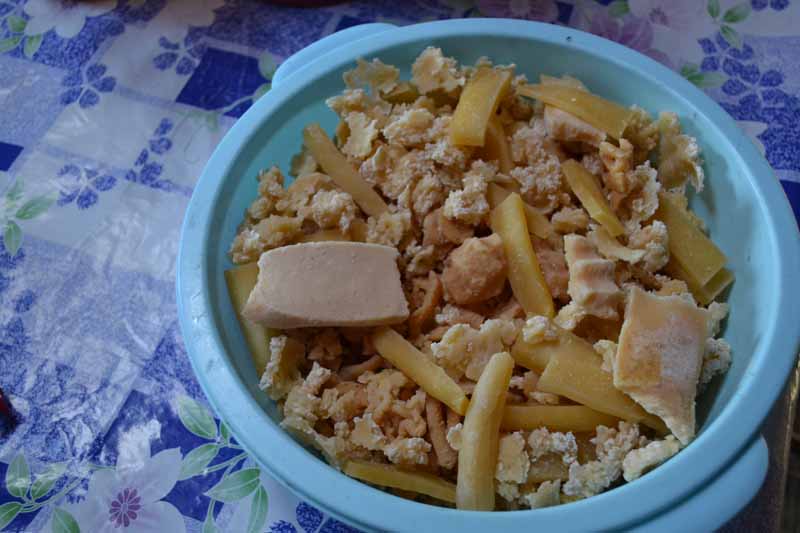
What’s the go: Mongolians leave the milk (of cattle, yaks and camels) to curdle, before separating the curd (solid components) from the whey (remaining liquid) via use of a fine cloth.
The curd is then pressed into a mass cake, sliced and left on top of the yurt (a traditional Mongolian abode) beneath the sun, to dry.
How’s it eaten: Aaruul can be stored almost indefinitely and as a result can become quite hard – so we were encouraged to suck on small bite sized pieces. It’s eaten as a snack, directly from the drying trays.
And the taste: A mixture between sweet and sour, but in many ways – more of a textural experience, as the flavour was subtle.
3. Salt Dried Fish, Russia
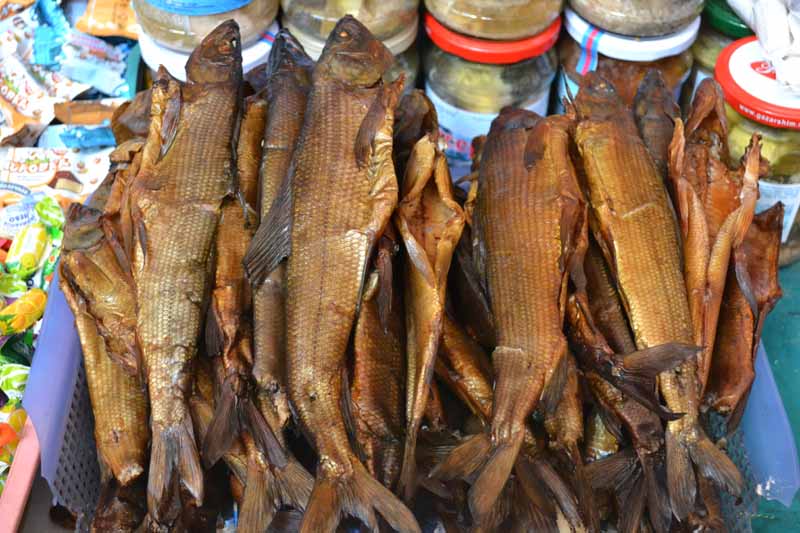
What’s the go: Fish (I tried Vobla) that is soaked in brine over several days, before being thoroughly air-dried. Commonly sold whole in supermarkets, railway platforms and street stalls across the country.
I put off trying this until my very last day in Russia – seeing the entire fish intact; scales and eyes – was too much.
How’s it eaten: Commonly served with beer, which softens the salty flavour of the fish – this is a popular snack across Russia.
And the taste: Fishy, salty with a chewy texture (textures can vary depending on how long the fish is left to dry, in some cases there is a greater moisture content, making it softer on the palate). I struggled with this particular snack so didn’t really shop around and sample the varying styles.
4. Red Ants, Thailand
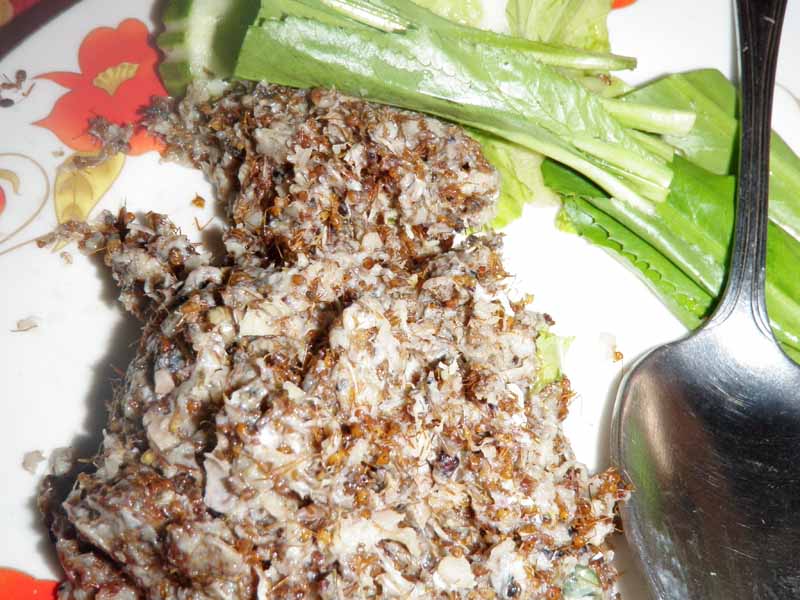
What’s the go: High in protein, low in fat – Red Ants (and their eggs) are readily consumed across South East Asia. Because of their acidic content they are commonly used in lieu of lemon juice and vinegar.
How’s it eaten: Frequently sautéed or used in salads
And the taste: Acidic, it was like a splash of lime.
5. Guinea Pig “Cuy”, Peru
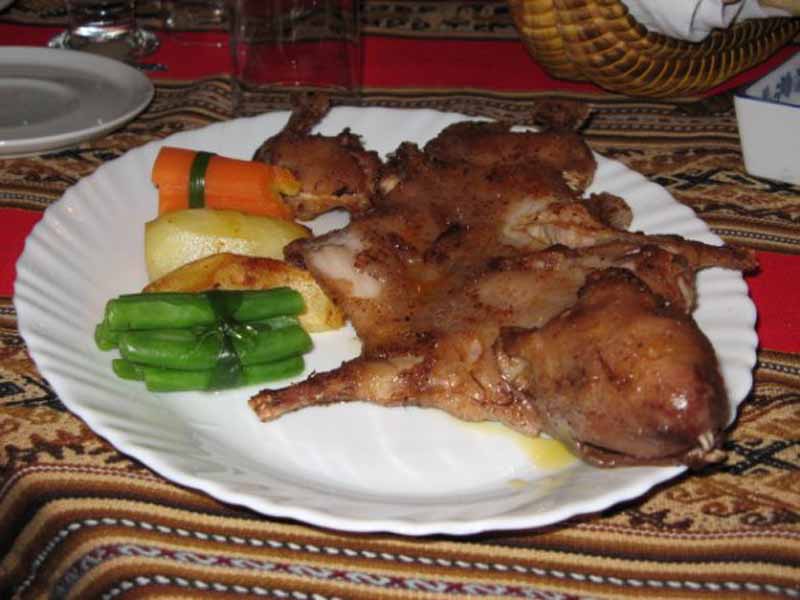
What’s the go: An estimated 70 million Guinea Pigs are consumed each year in Peru, for they’re a very important source of protein in the Andes.
How’s it eaten: Similar to how we would consume beef or lamb here in Australia, Cuy is fried or roasted and served alongside seasonal vegetables.
And the taste: Here’s another one that “tastes like chicken” although there is far less meat on a Guinea Pig, quite a lot of fat and depending on how it is cooked – can be a little bit chewy.
I only had it the once, and it was very oily. When it came to the table – its teeth (along with its head) were still attached and as a result, incredibly off-putting.
Guinea Pigs are domesticated here in Australia, so my mind really battled with the idea of eating this popular local dish.
6. Tacos de Lengua, Mexico
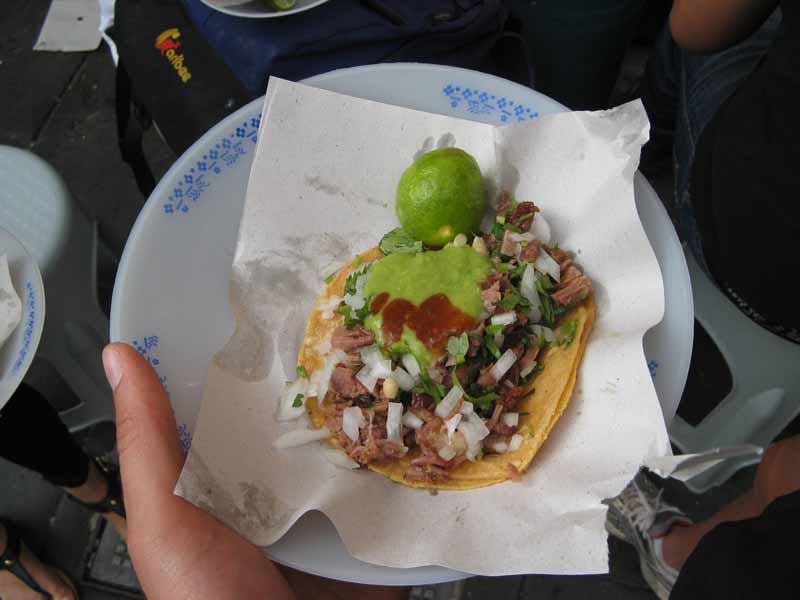
What’s the go: Very simply, pork or lambs tongue used in lieu of beef.
How’s it eaten: The tongue is commonly cooked in broth, until tender (for up to 6 hours) and then diced and cooked in a pan with oil prior to service.
And as you would expect from a traditional Mexican taco, it is stuffed into warmed corn tortillas along with cilantro, chopped onions, salsa, tomatillo sauce and fresh lime.
And the taste: Some pieces were tender, others chewy and a flavour that resembled brisket.
The visual appearance (and personal association) of food can really make or break it for me. So with this in mind, I absolutely should not have watched on as the tongue was prepared and cooked, as I was turned off before even giving it a fair shot. In saying that though, Ill always give something a burl…
I do know plenty of people who love it, but it’s just not for me.
7. Silk worm, China

What’s the go: So it’s not actually the worm itself, but the pupae (immature form between larva and adult).
How’s it eaten: I believe they’re steamed or boiled, and in my case – skewered and barbequed.
And the taste: You’re initially greeted with a crisp chewy exterior before reaching a thick gooey centre. I honestly couldn’t tell you what it tasted like as it was all textural for me and I brought it back up within seconds.
8. Airag, Mongolia
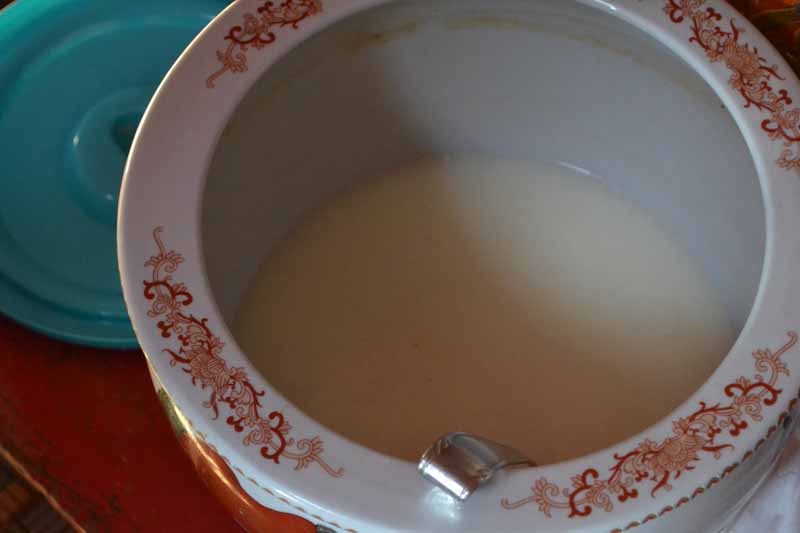
What’s the go: The Mongolian word for ‘fermented horse milk’. Milk is collected from the mare, filtered and stored in a large leather sack. Over a number of days the fermentation process takes place with the help of lactic acid bacteria and yeast.
How’s it eaten: Airag is the national drink of Mongolia and usually the first thing you’re offered when visiting the home of a Nomadic family. Its served in small bowls and simply consumed like any other beverage.
And the taste: It has low alcohol content, a very sour aftertaste and a mild fizz (caused by the presence of carbon dioxide). And it’s absolutely revolting.
9. Snake, China
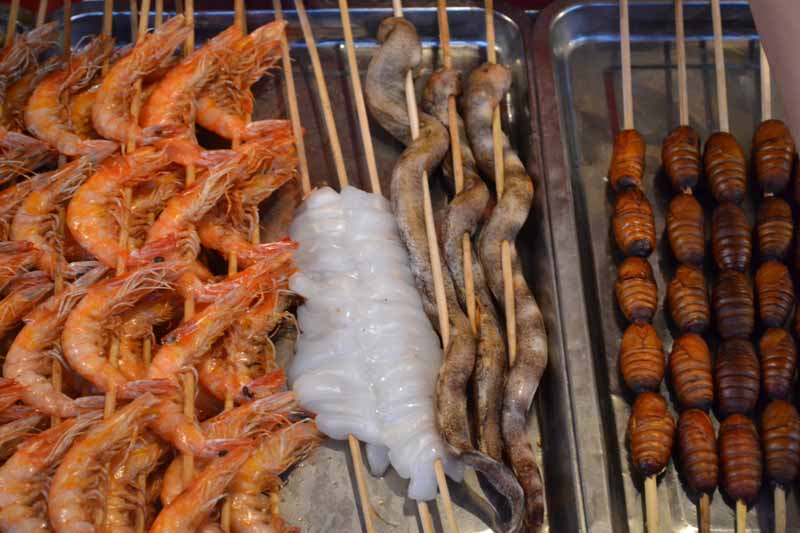
What’s the go: Snake is hugely popular across china, particularly for its perceived medicinal properties (such as the ability to restore eyesight, cure rheumatism and clear ones complexion).
How’s it eaten: The head and skin of the snake is removed, before the insides are flushed out. It can be cooked in a variety of ways, but I tried it battered and shallow fried.
And the taste: Chewy, rubbery with a distinct dirty aftertaste. If anything, you could compare it to chicken, but even that would be a stretch.
10. Balut, Vietnam
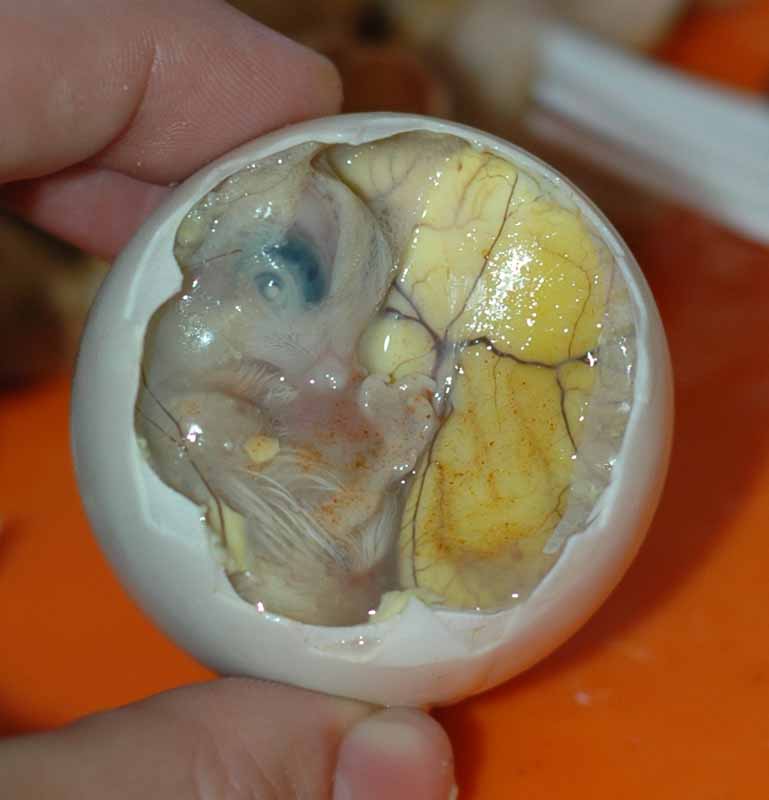
What’s the go: Balut is a fertilized duck egg with an almost-developed embryo inside. They’re considered delicacies across Asia, particularly for their high protein content and suspected aphrodisiac qualities.
How’s it eaten: Commonly sold by street vendors, the egg is boiled and the contents eaten directly from the shell.
And the taste: Are you kidding me? There is absolutely no way I could go there. Seeing the feathers, head and skeleton forming – I just cant even. But it had to make this list, as it’s the most abhorrent food I’ve encountered abroad.
While in Korea, I was subjected to Dog’s Head Soup by my father-in-law. There was no way I could say No! I have also tried eating live baby octopus, which you have to swallow very quickly, or they can attach themselves to your throat and choke you!
Richard! Thanks so much for your contribution to the blog! I cannot believe you ate a live baby octopus!? I actually only just read about this recently, and they were saying exactly that! You must swallow quickly to prevent them attaching to your throat. Unbelievable! How did you find it? Could you feel them moving about inside your mouth? I cant even imagine it. And as for dog head soup – revolting. May I ask how it tasted? Tom 🙂